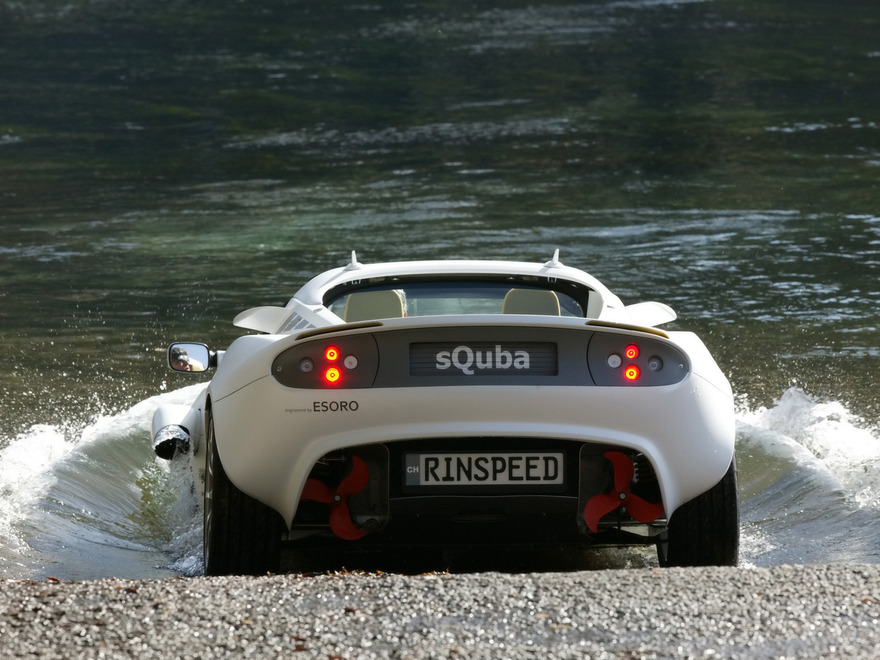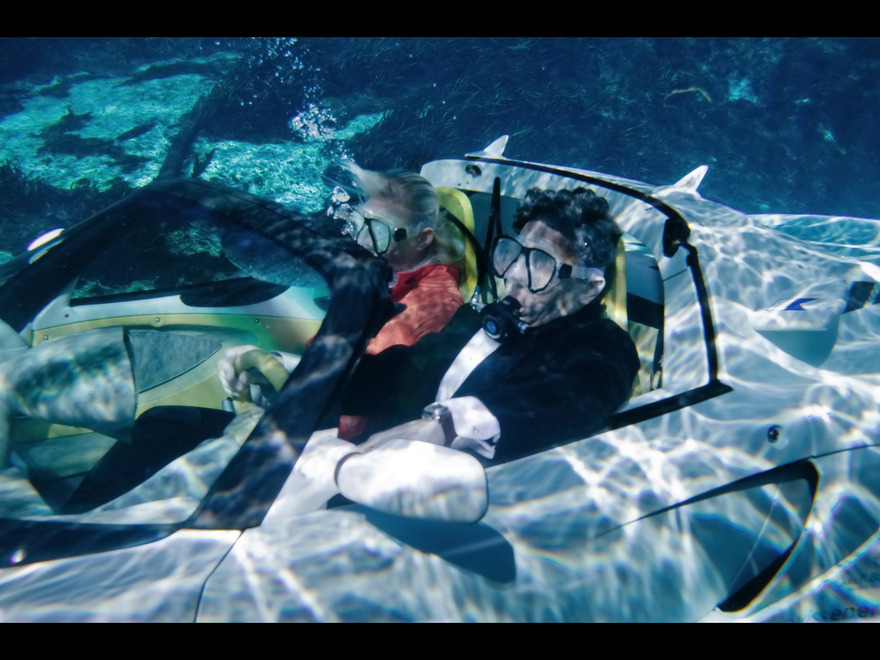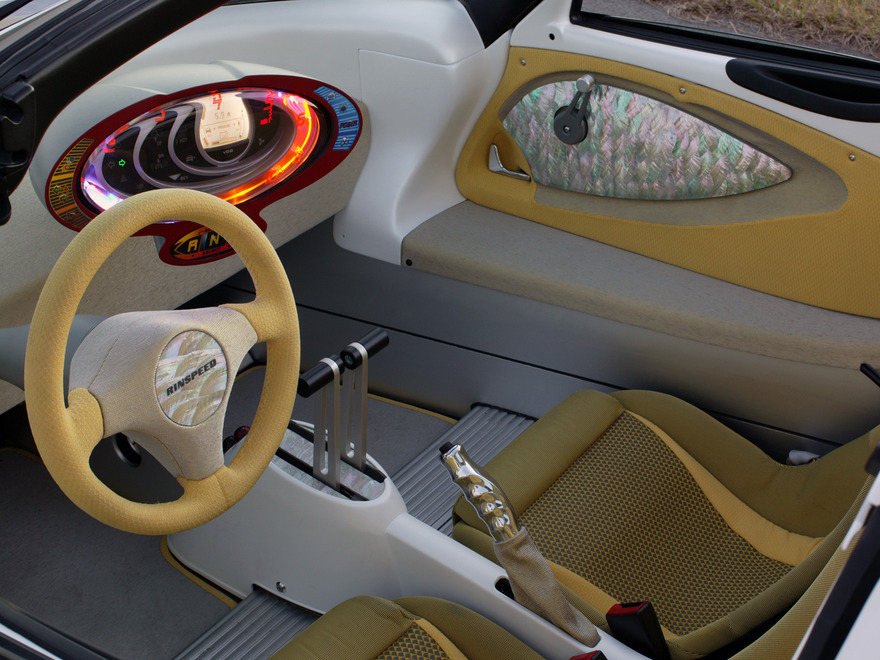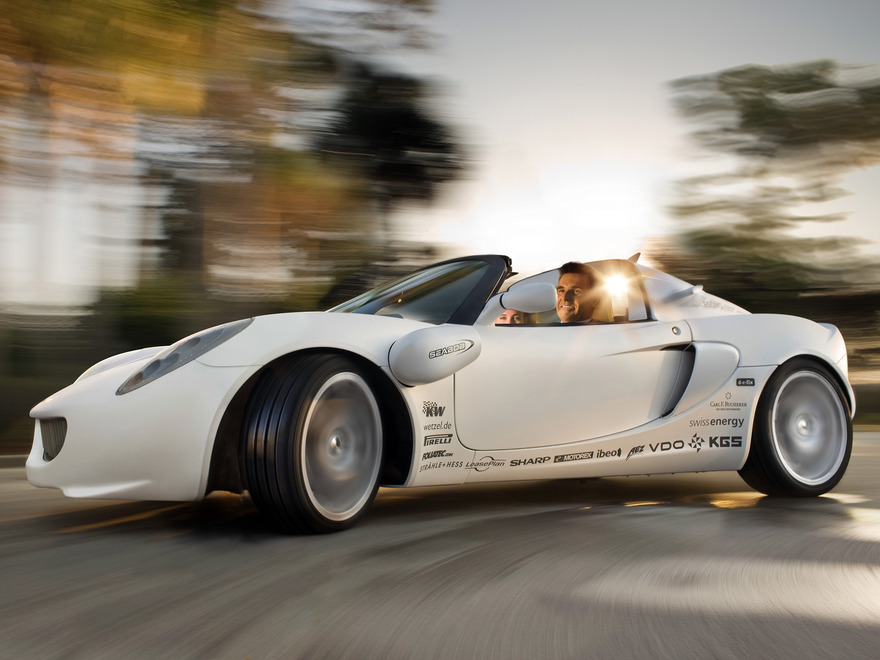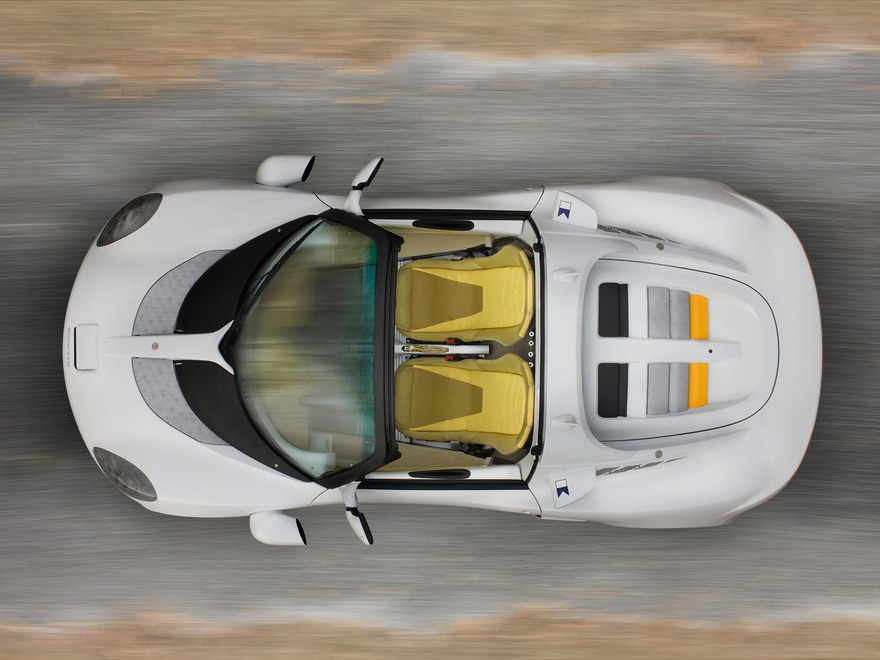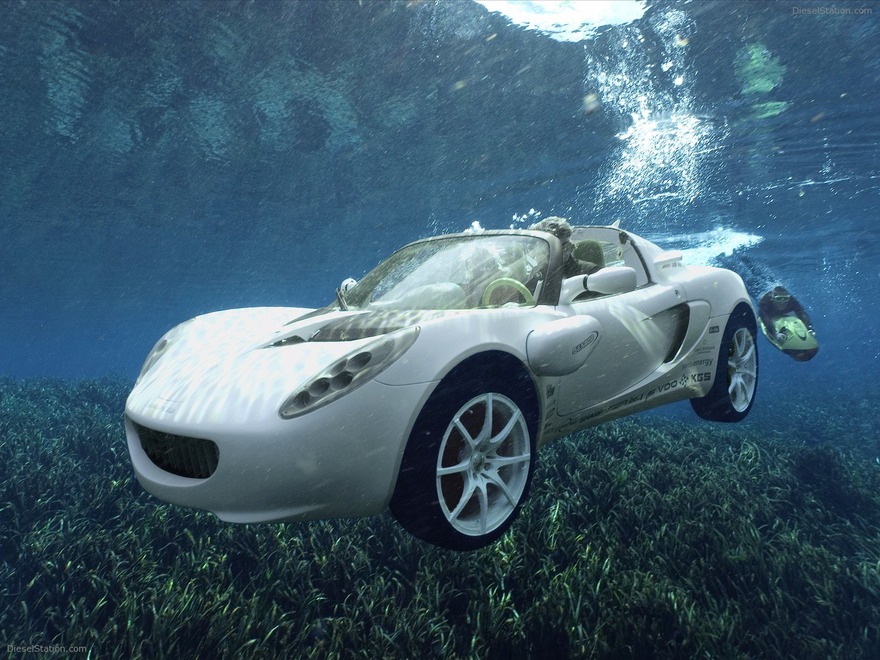In 2008 at the Geneva Motor Show the Swiss company RINSPEED unveiled an eco-friendly wonder car. It can be driven on land or, after pushing a button, plunge into the depths of water. All units of the amphibious vehicle were made using nanotechnology. Its electric motors guarantee a zero-emission level.
This unusual vehicle was named sQuba. The film about James Bond — The spy who loved me, 1977 — came out more than 30 years ago. It showed a superspy driving his Lotus Esprit in the underwater spaces. This film has inspired the RINSPEED’s CEO Frank M. Rinderknecht to create an aquatic car.
The concept with the intriguing name of the sQuba bears some traits of the legendary Lotus Elise (the production of the Esprit model was ceased a long time ago) and features all functions of a regular sports car apart from its unique ability of driving underwater.
The amphibious two-seater is fitted with three electric motors — one is used for driving on land, while the twin electric-powered propellers fitted in the rear part of the car keep the sQuba afloat with the help of special water jets, which provide forward movement under the water. Electric power is supplied by lithium-ion batteries with a total capacity of 10 kWh. The new-generation electric motor delivers the power of 37 kW and the torque of 160 Nm. In the on-land mode the car uses rear-wheel drive powertrain and two-mode transmission.
The sQuba can be submerged to a depth of 10 metres. This feat of engineering remains amazingly manoeuvrable under the water. The driver and passenger have to wear diving gear to have a ride below the surface. sQuba’s body consists of light hydrocarbon nanotubes merged with a special air injection system which conveys oxygen to the driver and passenger.
Frank M. Rinderknecht got carried away with the idea to prove that it was truly possible for a car to plunge deep under the water; and not just to plunge but also to rise back to the surface. For this purpose, the engineers have redistributed the weight of three motors to keep the vehicle floating steadily, while the pumps are used to pipe away the overboard water from the cabin.
In one of his interviews, Frank called James Bond a liar alleging as his reason that the cabin of the superspy’s car intended for the occupants had a capacity of 3 cubic metres. Based on physical calculations, one should load the car’s body with 3 tonnes of weight to make the car submerge. But in this instance it becomes drastically heavy and absolutely useless on the road. And in case of an accident, if this car gets under the water, the occupants will not be able to get out of the cabin as the doors will get locked due to high water pressure. That is why the open cockpit design has been chosen for the sQuba not only for appearance, but also for safety reasons — the people inside just need to unbuckle their seat belts and it will take them a few seconds to leave the car through the open top.
To prevent the convertible from sinking, the engineers used 300 cubic decimetres of floatation foam, the weight of which is 75 grams per 1 cubic metre. This foam provides the sQuba with nearly 1 tonne of buoyancy. Thanks to this special “fishing buoy”, the vehicle left under the water emerges to the surface by itself over some time. By the way, the sQuba is equipped with an autonomous cruise control system manufactured by Ibeo. The concept drives independently using the autopilot and even lets the pedestrians pass due to a built-in laser sensor system, which monitors objects moving on the road.
The design of the sQuba supercar focuses on aquatic theme. It has a streamline-shaped cockpit, a luxurious interior trimmed with waterproof material resembling fish scale and featuring embossments and nacreous gloss, while the use of precious pearls and diamonds lays emphasis on the status and level of this wonderful amphibious car. A unique dashboard with waterproof protective cover was custom-built by the engineers from Continental. It is clearly visible both on land and under the surface, protected against underwater deflection. The panel can be operated even wearing the gloves. The power of two motors is controlled by two pedals. The seats are upholstered with material with high friction coefficient, which helps keeping the passengers on their seats without using any extra devices, apart from the seat belts.
IT APPEARS THAT:
The sQuba is not the first RINSPEED’s project in the sphere of underwater vehicles. The Swiss company has already revealed another concept — Splash — at the Geneva Motor Show. The supercar was able to accelerate up to 80 km/h with the help of specially mounted “fins”. Some time ago, RINSPEED’s CEO was manufacturing a huge pick-up truck, which could be transformed into an air-cushion vehicle, and also a race car powered by vegetables. Such extraordinary automotive creations made people call Rinderknecht a “madman”. Nevertheless, the fame of a city madman does not scare away numerous serious sponsors, like, for instance, large European pharmaceutical companies or Swiss banks.
Here are the car’s technical specifications derived from public information sources. sQuba has a rather compact size: length — 3,785 mm, width — 1,820 mm, height — 1,117 mm. Wheelbase is 2,300 mm, while the road clearance is 130 mm. The vehicle’s curb weight is 920 kg. Its land top speed reaches 124 km/h (which is pretty good for an electric car), underwater speed is around 3 km/h, while the speed on the water surface is around 5 km/h.
The car’s 7.5 x 17" front wheels are wrapped in Pirelli P Zero 205/40 R17 tyres, while its rear 8 x 18" wheels feature Pirelli P Zero 225/40 R18 tyres.
There are no mass production plans for the wonder car in the nearest future. Only one unit has been created so far. Around $1.5 million were spent to bring this concept to life. The company’s CEO assures that in case the sQuba becomes a production vehicle, its price will be lower than that of a Rolls-Roys. But then again, in his opinion, it is unlikely that this car can have a large-scale selling rate and that is why the sQuba is destined to remain just a toy for the wealthy people.

